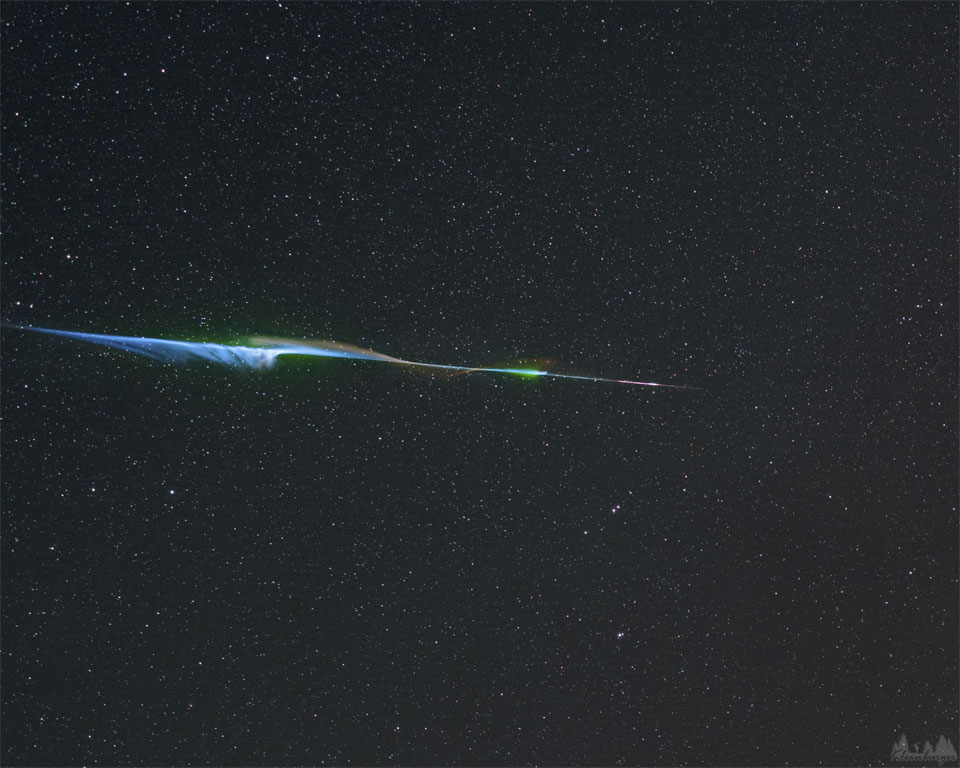流星解体时的元素发光
2023年7月24日
Chemicals Glow as a Meteor Disintegrates
Image Credit & Copyright: Michael Kleinburger
Explanation: Meteors can be colorful. While the human eye usually cannot discern many colors, cameras often can. Pictured here is a fireball, a disintegrating meteor that was not only one of the brightest the photographer has ever seen, but colorful. The meteor was captured by chance in mid-July with a camera set up on Hochkar Mountain in Austria to photograph the central band of our Milky Way galaxy. The radiant grit, likely cast off by a comet or asteroid long ago, had the misfortune to enter Earth’s atmosphere. Colors in meteors usually originate from ionized chemical elements released as the meteor disintegrates, with blue-green typically originating from magnesium, calcium radiating violet, and nickel glowing green. Red, however, typically originates from energized nitrogen and oxygen in the Earth’s atmosphere. This bright meteoric fireball was gone in a flash — less than a second — but it left a wind-blown ionization trail that remained visible for almost a minute.
Tomorrow’s picture: X-ray eagle
流星解体时的元素发光
影像提供与版权: Michael Kleinburger
说明: 流星的色彩可以很缤纷。虽然人类的眼睛无法分办太多色彩,但相机通常可以。这幅影像里的火流星,据摄影者之言,不但是他此生所见最明亮的流星,而其色彩更是无比缤纷。于今年7月中旬,在奥地利霍赫卡山设定相机要拍摄我们银河系的中央盘面时,摄影者意外捕捉到这颗流星。这颗发光的小碎片,可能是很久之前碎裂自彗星或小流星,然后不幸闯入了地球的大气层。流星的色彩通常来自流星解体时所释放的电离元素,蓝绿色泽的光通常来自镁、紫光来自钙、而绿光源自镍。不过,红光则通常是由地球大气中的激发态氮和氧所发出的。这颗转瞬即逝的火 流星持续不到1秒,然而它在风中飘飞的电离流星痕,可见的期间绵延了将近1分钟。
明日的图片: X-ray eagle

